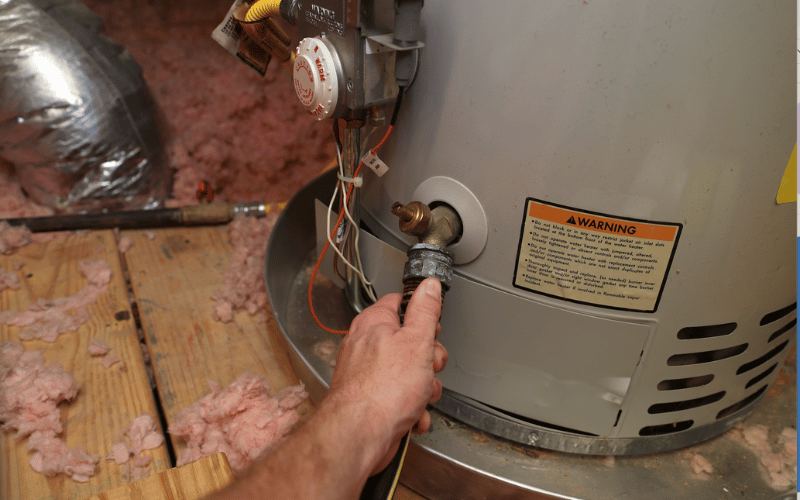Were you on the lookout for related information involving Tips on Maintaining a Water Heater?

Warm water is necessary for daily comfort, whether it's for a revitalizing shower or cleaning meals. To guarantee your warm water system runs efficiently and lasts longer, normal maintenance is essential. This post gives sensible ideas and understandings on exactly how to preserve your home's hot water system to avoid disruptions and pricey repair services.
Introduction
Keeping your home's warm water system could appear complicated, but with a few simple actions, you can guarantee it operates smoothly for many years to come. This overview covers every little thing from understanding your hot water system to DIY maintenance tips and knowing when to hire professional help.
Significance of Maintaining Your Hot Water System
Regular maintenance not only extends the life-span of your hot water system yet additionally guarantees it runs successfully. Disregarding upkeep can cause decreased efficiency, greater energy expenses, and even premature failing of the system.
Indicators Your Warm Water System Requirements Maintenance
Knowing when your hot water system requires focus can stop significant problems. Look out for signs such as irregular water temperature level, weird sounds from the heating unit, or rustic water.
Understanding Your Warm Water System
Prior to diving into maintenance tasks, it's practical to recognize the standard elements of your warm water system. Usually, this consists of the hot water heater itself, pipes, anode poles, and temperature controls.
Monthly Upkeep Tasks
Regular month-to-month checks can aid catch minor concerns before they escalate.
Purging the Water Heater
Purging your water heater removes debris buildup, improving performance and extending its life.
Checking and Changing Anode Rods
Anode rods protect against deterioration inside the storage tank. Checking and changing them when broken is vital.
Examining and Readjusting Temperature Settings
Adjusting the temperature level setups guarantees optimal efficiency and security.
Do It Yourself Tips for Maintenance
You can perform a number of maintenance jobs yourself to maintain your warm water system in leading condition.
Looking for Leakages
On a regular basis evaluate pipes and links for leaks, as these can bring about water damage and higher expenses.
Examining Pressure Relief Valves
Checking the stress safety valve ensures it operates correctly and protects against excessive stress build-up.
Protecting Pipelines
Insulating warm water pipes lowers heat loss and can conserve power.
When to Call an Expert
While do it yourself maintenance is useful, some concerns require expert experience.
Complex Problems Calling For Professional Assistance
Instances include major leakages, electric problems, or if your water heater is constantly underperforming.
Routine Specialist Upkeep Advantages
Professional maintenance can include detailed examinations, tune-ups, and ensuring compliance with safety standards.
Final thought
Routine upkeep of your home's warm water system is essential for efficiency, durability, and expense financial savings. By adhering to these tips and knowing when to seek professional assistance, you can make sure a reputable supply of warm water without unanticipated interruptions.
How to Maintain an Instant Hot Water Heater
Before tinkering with your hot water heater, make sure that it’s not powered on. You also have to turn off the main circuit breaker and shut off the main gas line to prevent accidents. Also turn off the water valves connected to your unit to prevent water from flowing into and out of the appliance. 2. When you’re done, you have to detach the purge valves’ caps. These look like the letter “T” and are situated on either side of the water valves. Doing so will release any pressure that has accumulated inside the valves while at the same time avoid hot water from shooting out and burning your skin. 3. When the purge valves’ caps are removed, you have to connect your hosing lines to the valves. Your unit should have come with three hoses but if it didn’t, you can purchase these things from any hardware or home repair shops. You can also get them from retail stores that sell water heating systems. Read the user’s manual and follow it to complete this task properly. When the hosing lines are connected, open the purge port’s valves. 4. You should never use harsh chemical cleaners or solutions when cleaning your unit. Make use of white vinegar instead. It should be undiluted and you’ll probably use about 2 gallons. 5. Now flush your water heater. This task should probably take about 40 minutes. We can’t give you specific directions for this because the procedure is carried out depending on the type, model and brand of your heater. With that being said, refer to the user’s manual. 6. When you’re done draining the unit, you have to turn off the purge port valves again. Remove the hosing lines that you earlier installed on each of the water valves. Put the valve caps (purge port) back in their respective places and be very careful so as not to damage the rubber discs that are found inside these caps. 7. Now that everything’s back in place, check your user’s manual again to find out how to reactivate your water heating system. 8. Once it is working, turn one of your hot water faucets on just to let air pass through the heater’s water supply pipes. Leave the tap on until water flows smoothly out of it. https://www.orrplumbing.com/blog/2014/september/how-to-maintain-an-instant-hot-water-heater/

I am very inquisitive about Tips on Maintaining a Water Heater and I hope you liked our blog post. Sharing is nice. One never knows, you may be helping someone out. Many thanks for being here. Return soon.
Maintenance Sign-Up